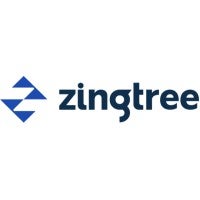Best Decision Making Tools & Software 2021
For many businesses, decisions are left up to managers and executives while individual contributors focus on their day-to-day work. However, 86 percent of businesses feel that they perform better when they empower their frontline workers to make decisions and give them the insight they need to improve their decision making. Organizations looking to improve their decision making on every level of the business should consider decision-making software.
Choosing decision making process software
- What are decision making tools?
- Key features of decision management software
- Compare the top decision making software of 2021
- Yonyx
- airfocus
- Zingtree
- WinQSB
- ADP by Lending Metrics
- EIDOS
- Loomio
- Checkbox
What are Decision Making Tools?
Decision making tools are software platforms that help businesses use the data they collect to inform and sometimes automate the decision-making process. They also help employees share those decisions with relevant stakeholders and get approvals when necessary. These tools should integrate easily with the organization’s business intelligence software to pull relevant visualizations and reports.
Tools that include artificial intelligence also provide the ability to simulate decisions, allowing organizations to get an idea of what might happen based on their choices.
Also read: The Growing Relevance of Hyperautomation in ITOps
Key Features of Decision Management Software
When choosing the best decision management software for their business, organizations should look for these key features.
Scenario analysis
Using employee input, decision management software analyzes the relevant scenario and pulls historical data to automatically point employees towards a decision. This is often used in self-serve knowledge bases as well as helping employees recommend a product or service for new customers. More advanced tools will use this analysis to automate parts of the workflow, like sending contracts or approval requests.
Consensus tracking
When decisions need approval from multiple people, it can be difficult to remember who has provided feedback and who hasn’t. Consensus tracking keeps a record of everyone who has approved a decision and can send notifications to remind those who haven’t yet. Not only does this keep projects more organized, but it also reduces delays that stem from waiting on approvals.
Also read: Work-From-Anywhere Requires More Resilient IT
Cost-benefit analysis
One of the most important components of any decision is the budget. With cost-benefit analysis, decision-making tools can forecast the likely savings or revenue increase vs. the cost of the decision for the organization. This can help them determine whether or not to move forward with their current course of action or if they need to rethink their plan.
Compare the Top Decision Making Software of 2021
Organizations looking for decision-making software should take a look at these top products, chosen based on high customer ratings and solid feature sets.
Yonyx
Yonyx provides interactive decision trees for self-service portals, call centers, and telemarketers. Organizations can even A/B test scripts to see which ones are more effective. Troubleshooting decision trees allow customers to solve problems themselves, only escalating to an agent if they run into something they don’t understand or something outside the scope of the decision tree. CRM integrations can also simplify customer interactions by pulling information about products or services they’ve purchased in the past.

Pros
- Platform is cloud-based and provides real-time updates
- It’s easy to create new guides and decision trees
- Support is helpful and makes regular upgrades
Cons
- Editing a guide after it has been created can be difficult
- Some of the training materials could use improvement
airfocus
airfocus is a product management platform that helps businesses make better decisions during product development. The drag-and-drop roadmap builder keeps teammates aligned on decisions and notifies necessary team members when their approval is needed. The roadmaps are also based on objectives, helping teams make goal-based decisions every step of the way. Additionally, organizations can create a scoring framework that makes prioritizing work easier and helps everyone understand which decisions are the most important.

Pros
- Includes several project management features, like Kanban boards and Gantt charts
- Easy to prioritize and display important projects
- Customizable and provides good visuals
Cons
- Can sometimes be difficult to share roadmaps or give access to customers and employees
- It can be difficult to archive more than one roadmap or task at a time
Zingtree
Zingtree offers decision making tools for both internal processes and agent scripting for sales and support calls. The internal feature set includes a self-service knowledge base where subject matter experts can create a decision tree and then employees can easily follow it to find the information they need. The scripting features help your sales team qualify leads right on the call and find relevant product information quickly. It also ensures compliance and helps your agents stay on track.

Pros
- The system is flexible and customizable
- Support is helpful and responsive
- Reduces onboarding time and improves compliance
Cons
- Setup can be difficult, especially with detailed decision trees
- The backend is sometimes hard to navigate
WinQSB
WinQSB is an open source decision-making platform that works with Windows operating systems. It treats decisions like mathematical problems, providing the pros and cons of each decision. The modules it supports make the system very customizable, allowing organizations to address their own particular set of challenges. Through customization, businesses can see the type of decisions they make most often and set up decision trees to help them make decisions more quickly in the future.

Pros
- Free and includes a variety of modules to customize the system
- The user interface is fairly intuitive
- Supports a variety of problem-solving techniques
Cons
- There are a limited number of advanced modules available
- Will likely require developer input to get it functional
ADP by Lending Metrics
Lending Metrics’ Auto Decision Platform (ADP) is best for businesses in the financial industry, like insurance providers or mortgage lenders. It includes a robust API suite, allowing integration with a variety of CRM systems and website platforms to start customers on their journey. By connecting to third-party credit bureaus, it can also pull detailed information about a customer’s credit history automatically, reducing some of the manual work. The no-code decision engine allows organizations to create decision trees that fit the needs of their business without developer input.

Pros
- Cloud-based platform that works with a variety of operating systems
- Offers 24/7 live support
- Improves lending compliance
Cons
- Doesn’t include data analysis
- Navigation can sometimes be difficult
EIDOS
EIDOS from Parmenides helps businesses make better decisions faster right out of the box with eight pre-configured strategic processes. It also compares up to 450 data points in a single visualization to help organizations make the choice that best fits their needs. The strategizing model allows businesses to make templates of common decision trees, so they can quickly set them up for future use. Additionally, it provides a look at different scenarios that might arise depending on the choice the company makes.

Pros
- Offers a rich suite of decision-making and visualization tools
- Allows both structured and unstructured problem analysis
- Offers a collaborative environment for decision making
Cons
- Import and export functionalities can sometimes be difficult to use
- Requires time to get the best information
Loomio
Loomio provides a consolidated space for an organization’s decision makers to examine their data, store relevant information, and collaborate on important choices for the company. Threads keep all of the information on a decision in place and allow teams to discuss it without fear of losing their notes. Proposals can also help ensure that decision makers get the approvals they need to move forward. They can put notes in about the decision and set a due date, and the system will automatically notify anyone who needs to weigh in.

Pros
- Offers good support and easy to understand pricing
- Makes business meetings more efficient
- Can pin comments in threads to keep them from getting pushed down
Cons
- Threads with a lot of comments might get confusing
- Onboarding can be difficult for team members that aren’t very tech savvy
Checkbox
Checkbox is a no-code platform that helps businesses make decision trees to simplify their processes and make more informed decisions. The smart forms are easy to build and don’t require developer input, which means more departments across the business can use them. The dashboards are also customizable and provide real-time insights into services and processes. Companies can also easily share their applications and decision trees with a URL link, guarded by a passcode.

Pros
- Easy to build simple apps even without developer knowledge
- Responsive and helpful support team
- Can automatically request approvals from relevant stakeholders
Cons
- Complicated workflows might require some developer input
- Some customers would like to see improvement with user management features, like offboarding and categorization.
Read next: Data Management with AI: Making Big Data Manageable
The post Best Decision Making Tools & Software 2021 appeared first on IT Business Edge.